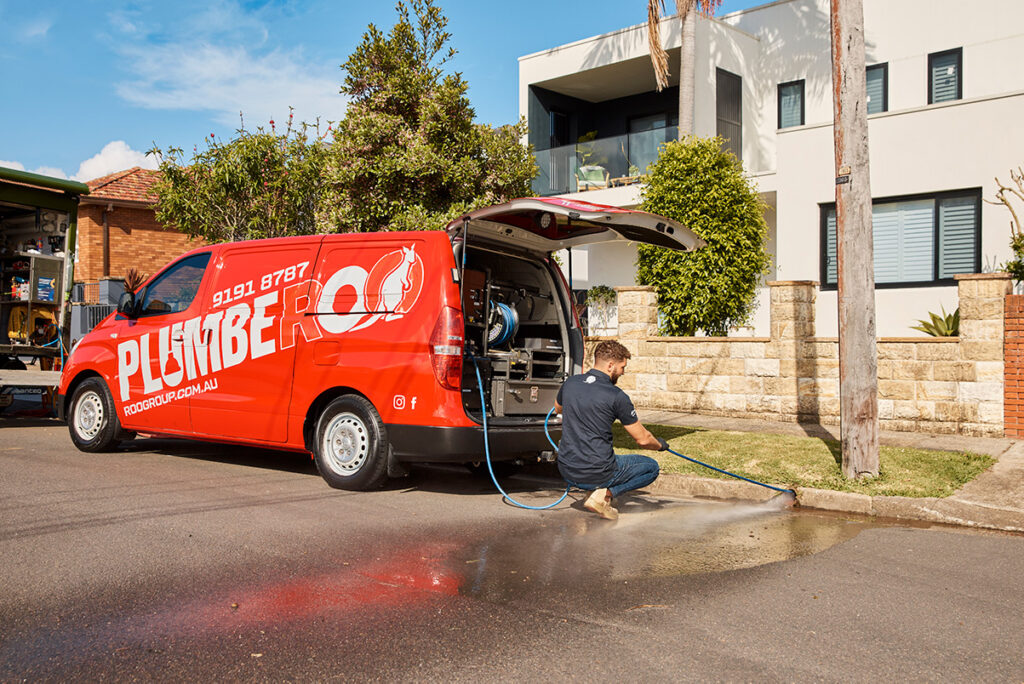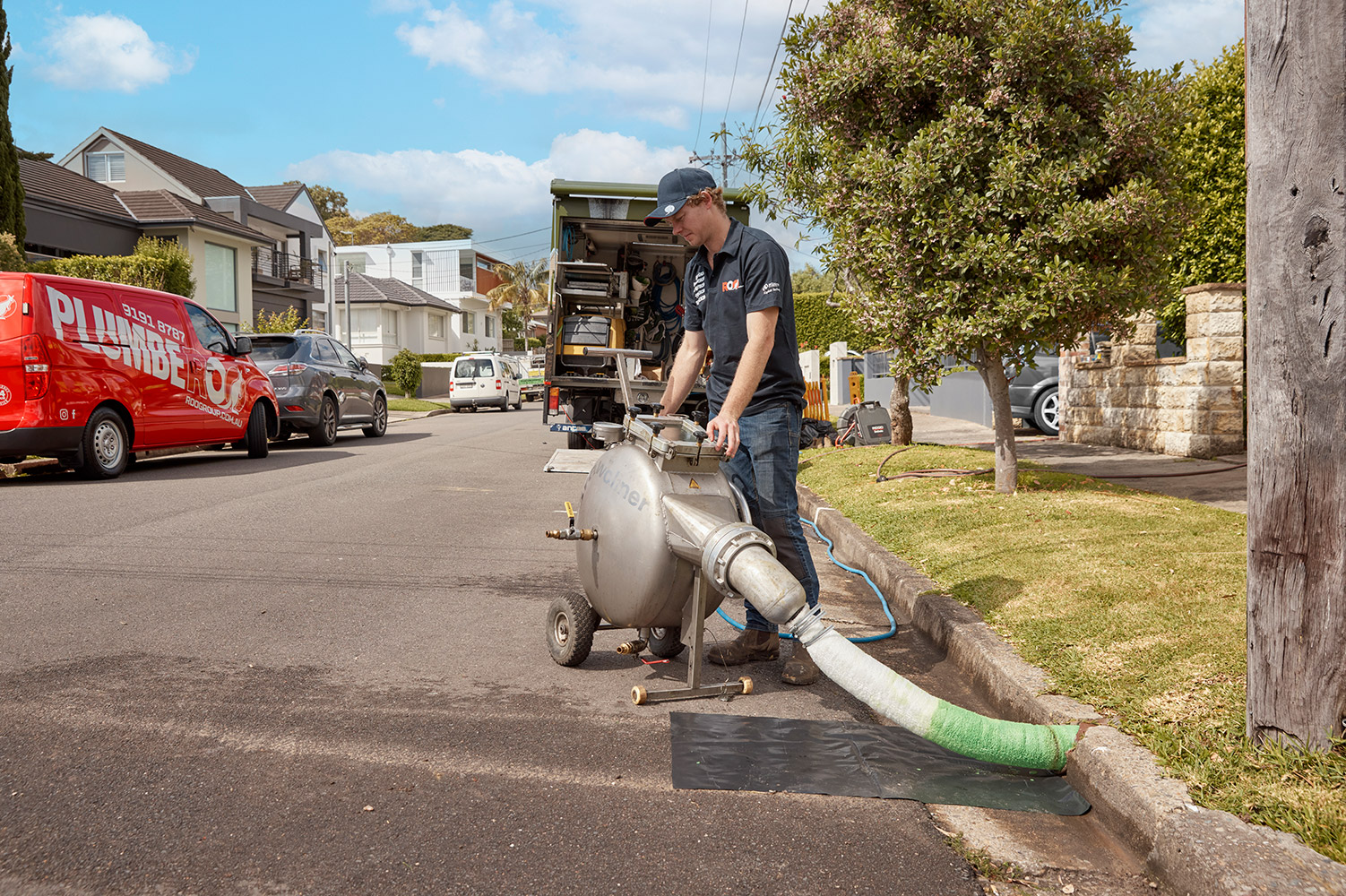
Open 24/7! Servicing all of Sydney’s Eastern Suburbs
Our Average Response time is: 1hr 53min 47sec
While a broken pipe anywhere is a massive inconvenience and downright pain to deal with, a broken sewer pipe is even worse, creating a homeowner's nightmare. Raw sewage presents multiple health hazards, while foul odours can quickly make a place unliveable if the problem is not dealt with quickly.
Join us, as we explore everything you need to know to keep your home's sewer line working as it should be, as well as what to do if you experience a blocked drain or encounter a plumbing emergency.
The home's sewer line is a direct link from the home's sinks, toilets, and showers, that carries all the grey water and waste water into the public sewerage system to be taken away for treatment at a wastewater treatment plant. The sewer line is located under the house and carries our wastewater under the front yard into the public plumbing system.
Sewer lines see a lot of action: everything we flush or wash down our sinks, drains, and toilets is taken through the sewerage system. While sewer pipes are designed to handle this load, age and wear and tear can eventually start to impact their efficacy and integrity, especially in homes that are already decades old.
Outside influences can also impact sewer line health. Tree root infiltration can break open pipes, leading to a sewer line clog and if it is bad enough, can lead to sewage backups or sewage spills, contaminating the surrounding soil at the site of the break.
Corrosion from hard water can also cause pipe damage, as build-up of calcium and magnesium narrows the pipe's diameter, putting extra pressure its structure. Additionally, their position and length puts them at risk of damage from ground movement. If there is heavy construction nearby, a seismic event like an earth tremor, or even the natural settling of soil over the years, can all impact the pipe's integrity.
Finally, improper installation or installing damaged or poor-quality pipes can create immediate problems.
Because the home's sewer system is underground, we rarely even remember it's there, at least until something goes wrong. However, like all home systems, the sewer system needs regular maintenance checks to ensure it's running in proper order.

Any signs of damage or trouble must be swiftly dealt with before it becomes a major issue. Major repairs can be costly, inconvenient, and due to the nature of the pipe's contents, can come with far more health risks and property damage than the clean water coming into the property.
Without proper, reliable drainage from drains, toilets, sinks, and appliances like washing machines and dishwashers, there is a risk of overflowing back into the home, creating a filthy mess with contaminated water. Don't run the risk. Preventative measures are the best way to ensure you don't encounter a plumbing emergency and avoid expensive indoor plumbing repairs.
Several signs can indicate a growing problem with your sewer line. If you notice slow draining or experience frequent clogged pipes connecting to your sinks, showers, and toilets, there may be a problem further into the sewerage network.
Foul smells (like rotten eggs) or strange sounds (like gurgling) coming up from your drains are another sign that all is not well, as it means waste and wastewater are not being removed effectively.
If these signs are present in one sink or shower, there is a potential problem, but if you notice multiple drains are becoming clogged at the same time, a much more significant issue may be taking place beneath your feet.
While the above warning signs can give you an idea that something is wrong, the only way to know for sure is to call in for a sewer camera inspection. Specialised tools, such as CCTV drain cameras, allow professional plumbers to visually inspect the sewer line from the drain to the mains with no need for digging or other disruptive measures. This allows for the early detection of issues before they can grow into an emergency like a cracked pipe or sewage spill.
Pipe relining is a fast and effective solution to repair subterranean pipes without the need to dig up the earth or disrupt the site of the damage. A resin-coated line is inserted into the damaged section of the pipe, where it is then inflated and hardened to create a watertight seal over the damage. Effectively, the pipe is restored to its original strength without any need to dig up the site or replace the damaged pipe itself. Pipe relining is a permanent solution for pipe repair, as the lining has a lifespan of at least 35 years.
In the rare case that a pipe is completely destroyed or compromised too much, the only option may be a traditional excavation and replacement. This is time-consuming and expensive and considered a last resort, as it often affects the landscaping and other structures near the broken pipe. However, with proper maintenance and inspections, sewer issues can often be resolved well before reaching this point.
Most DIY options are only surface-level fixes, affecting only the section of pipe that a drain snake or chemical drain cleaner can reach. Unfortunately, most serious sewer problems occur deeper within the system and without the intervention of professional services, the issues will likely only get worse.
While DIY approaches are a good and cost-effective place to start, if they do not resolve the problem or the problem reoccurs soon after, do not hesitate to call in the services of a professional plumber before the issue can grow into an emergency requiring inconvenient and costly repairs.
Licensed and certified plumbers have the expertise and experience, as well as the specialised equipment, to inspect and diagnose sewer line damage. After having the sewer line inspected, property owners can then be informed of any potential damage as well as the recommended courses of action.
This can range from minor repairs like a pipe cleaning or unblocking to the advanced trenchless sewer repair process, which can get a home's plumbing system back on track within hours.
Sewer lines should be cleaned and well-maintained but the frequency of the maintenance schedule will depend on the size of the household and collective usage habits. However, a good rule of thumb is that your sewer line should be flushed out and cleaned every 18–24 months to ensure smooth uninterrupted operation. So, what's the best way to do it?
While we might be able to effectively clean drains with chemical drain cleaners or a drain snake ourselves, DIY maintenance is limited to more surface-level cleaning.
Major issues typically occur in much deeper pipes, so you will need to call in a professional drain cleaning service for a more thorough cleaning. This helps keep your household drains clear and sharply reduces the chances of a pipe bursting or a drain line becoming clogged.
A main sewer line replacement is the removal and replacement of an old, damaged pipe to restore the integrity of the sewerage system. This typically requires extensive excavation and is used as a last resort when there is no other option.
A replacement becomes necessary if a camera inspection has found damage, such as cracks or holes, in over 50% of the sewer line. At this level of damage, a full replacement is going to be a better financial investment. For small sections of pipe with recurring clogs or tree root intrusion, a sectional replacement can also be an effective fix, especially if neighbouring damaged sections are also reinforced with pipe relining.
Pipe relining is an incredibly effective, no-dig method of repairing broken or worn-out underground pipes. Without digging up the pipe, a resin epoxy liner is fed through to the damaged section from the drain above, inflated and hardened to reinforce the pipe back to its original strength and more.

There are several benefits to pipe relining:
Local councils are responsible for the sewer main and the pipes transporting wastewater through the mains to the water treatment centre. Homeowners are responsible for the sewerage pipes leading from their homes to the mains.
The lifespan of a modern PVC sewer line is over 100 years. However, other types of pipes, such as metallic alloys or clay/earthenware pipes, may have a shorter lifespan.
If wastewater is not draining as it should, if drains are producing foul odours, sewage backups, a soggy yard, and a sudden increase in your water bill are all signs that your sewer line may need to be repaired.
If you detect one of the warning signs mentioned above, it is always best to take immediate action and call in a qualified sewer line specialist. These plumbers have extensive training and the specialised tools to inspect, diagnose, and repair any faults in your sewer lines.
So, what should you look for in a sewer line plumber?
First, make sure that sewer work is one of their areas of expertise. Next check their website for evidence of certifications, qualifications, and licenses to be sure they can legally work on sewers. Next, give yourself peace of mind by looking up their insurance and warranty information. Finally, check their online reviews to ensure that previous customers have been satisfied with their work.
One final tip is always opting for a local plumber who is familiar with the local sewerage system and understands the plumbing needs of the local area. Like us! The team at Plumberoo are locals to Sydney's eastern suburbs, so we understand the unique needs of the local area and its plumbing systems inside and out.
Qualified, certified, and with all the equipment and know-how required to inspect and repair your pipes, give the friendly Plumberoo team a call today if you notice any of the warning signs we've discussed above. Time is of the essence with a sewer line repair, so save yourself the future headache and have your sewer systems inspected and maintained with a professional plumbing service.